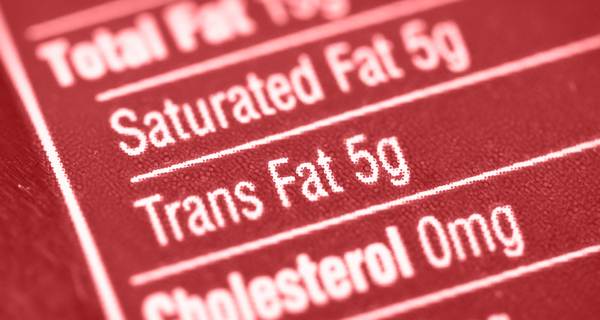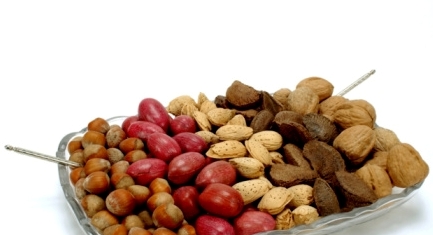How to Lose 50 Pounds
Attempting to lose 50 pounds is a large goal that can be attainable as long as you dedicate enough time and effort. In addition, you'll need to find a eating and exercise plan that fits your lifestyle so you can it sustain somewhat easily for several months. Losing 50 pounds safely and in a healthy manner will take a long time since you should aim for a 1-2 pound weight loss each week. Start making small changes to your diet and include regular exercise to help you start on your goal to lose 50 pounds.
Steps
Part 1 Changing Your Diet
-
1
See a registered dietitian. When you're trying to lose 50 pounds, you're aiming for a long-term goal. This will take several months and seeing a Registered Dietitian can make sure you choose a diet plan that is safe and effective for you long-term.
- Registered Dietitians are weight loss and nutrition experts. They can help design a diet and a meal plan that will help you lose weight over time.
- In addition, a dietitian can act as a accountability method for you over the months you're following the diet. Plus, if you hit a stall or slip up, the dietitian can help get you through.
- Search online or ask your primary care doctor for a referral to a local dietitian that focuses on weight loss.
- In addition, when you have 50 pounds or more of weight to loss you may also have obesity-related health conditions (like diabetes or high blood pressure). Working with a dietitian who is a medical professional can make sure that these health conditions are monitored as well.[1]
-
2
Start a food diary. Many studies show that keeping a detailed food journal is beneficial to long-term weight loss and weight maintenance.[2] Start a food journal to help you keep track of your meals and provide you with a method of accountability.
- Start your food journal prior to changing your diet. This can help you see where in your diet you can make changes. Take notes on your food diary about things that you should stop, things you should start or other trouble areas in your diet.
- Once you start your diet, track all meals, snacks and beverages. Review your journal most days to make sure you're stick to your plan.
-
3
Aim to cut 500 calories per day from your diet. Losing weight will require you to eat less everyday. Cutting out calories is an easy way to monitor how much you're eating and result in weight loss.
- To lose 1-2 pounds per week, most health professionals recommend cutting out about 500 calories from your current intake each day.[3]
- If you plan to exercise for an hour or more per day, try a more conservative number, such as 300 or 400 calories, allowing exercise to account for an equal amount of the change.
- Never eat less than 1200 calories daily. Even if you want to lose large quantities of weight, it's never advisable to eat fewer than 1200 calories daily. You'll increase your risk of nutrient deficiencies, loss of lean muscle mass and over time you weight loss may actually slow.[4]
-
4
Eat enough protein. When you're trying to lose weight and are cutting calories, you want to make sure that you're eating enough protein each day. Protein is an essential nutrient for successful weight loss.
- Many times when you're cutting calories and are increasing your physical activity, you may feel more hungry throughout the day. Ensuring you're eating adequate amounts of protein can help minimize bothersome hunger pangs throughout the day.[5]
- In addition, protein helps fuel weight loss. It keeps you feeling satisfied with your meals and helps support your metabolism.[6]
- To meet your protein needs daily, include 1-2 servings of protein at every meal and snack. Each serving of protein should be about 3-4 oz.[7]
- Also choose lean protein. Leaner proteins are lower in fat and calories and can help you stay within your calorie limit.
- Choose lean proteins like: poultry, eggs, lean beef, pork, seafood, legumes and tofu.
-
5
Eat a fruit or vegetable at each meal. Fruits and vegetables are key food groups to include in your diet when you're trying to lose weight. Aim to have either a fruit, vegetable or both at each meal.
- Fruits and vegetables can support weight loss because they are low in calories and high in fiber. They provide bulk to your meals which can help you feel satisfied with less in addition to keeping you satisfied longer.[8]
- These foods are also very nutrient dense. They contain very high amounts of vitamins and minerals which are key to overall health.
- Measure the portions of fruits and vegetables to 1 cup of vegetables, 2 cups of salad greens and 1/2 cup of fruit.[9][10]
-
6
Choose whole grain foods. Include regular servings of whole grains in your diet as well. These foods can also help you with weight loss.
- Whole grains are very nutritious and help with weight loss by adding more fiber to your diet. Fiber helps you feel full longer and can keep your appetite suppressed longer.[11]
- Refined grains, like white bread, white rice or other baked goods made with white flour, are typically very low in fiber and other nutrients. These are considered empty calories and should be avoided or eaten only on a special occasion.
- Make sure to measure grains. A serving is 1 oz or 1/2 cup total.[12]
- Although lower carb diets do result in somewhat quicker weight loss, remember you're trying to make a lifestyle change and not follow a diet.[13] If you truly enjoy eating carbs like bread, rice or pasta, eliminating might not be a realistic lifestyle change for you.
-
7
Limit high fat foods and foods with added sugars. While there are many foods that will support and fuel your weight loss, there are a few that should be strictly limited.
- High fat foods like fried foods or fast foods should be limited or restricted. They are high in fat and calories and can lead to a weight plateau or weight gain if eaten frequently.[14]
- Avoid foods like fast foods, fried foods, fatty cuts of meat and processed meats.
- In addition to fatty foods, try to avoid foods that are high in added sugars. Like fat, lots of added sugar comes with a significant amount of extra calories as well. Eating many of these foods can increase weight.[15]
- Avoid foods like: sweetened beverages, breakfast pastries, candy, cookies, cakes or pies, ice creams or frozen yogurts, yogurts with candy and jellies/jams.
Part 2 Including an Exercise Routine
-
1
Choose cardiovascular exercise that works for your body. Joint problems and excess weight can determine how much you exercise and what types of activities you can do.
- Workout 30 to 60 minutes per day, at least 5 days per week. Always do your cardio workouts for at least 20 minutes at a time.[16]
- For faster weight loss, do cardio for 45 minutes 5 to 6 times per week.[17]
- Do low-impact exercise, like swimming, water aerobics, walking, elliptical training and/or cycling, if you have joint problems. If walking is painful because of your weight, then choose water workouts until you have lost 20 lbs.
- Do high-impact exercise, if you don’t have joint problems. High-impact running, jumping and boot camps will burn fat the fastest, making it easier to obtain your goals.
-
2
Do strength training for 30 minutes 2 to 3 times per week. Like cardio, strength training exercises can help you lose weight and keep it off long-term.[18]
- Weight lifting or strength training exercises do not burn as many calories as cardio. However, they do help to increase lean muscle mass and decrease your risk of osteoporosis.[19]
- Also, with increased muscle mass, your body will burn more calories at rest. Your metabolism will be higher and it'll be easier to maintain your weight.
- Sign up for a training class if you have never used weights before. You can learn how to use weights or weight machines correctly.
- You can start with free weights of 2 to 5 lbs. (0.9 to 2.3 kg) or opt for heavier free weights and weight machines after a month of strength training.
-
3
Get a workout buddy. Find someone who is looking to make a lifestyle change. Working out with a friend makes exercise more fun and it'll help you stick to your goal long-term.[20]
- Sign up for fitness classes, personal training classes or simply go for walks together.
- Many personal trainers offer reduced rates to partners or groups of people.
- If you can’t find someone to make a goal with you, join a group like Weight Watchers. Weekly weigh-ins are mostly important for moral support.
-
4
Mix up your workouts. Try something new each month. This may help you stay interested in physical activity and help prevent getting into an exercise rut.
- If you notice you're getting bored with your workout or it's becoming too easy, try something new. Try group classes, trying exercising outdoors or even switching the time of day.
- Also try doing exercise that is more fun. You can play a sport, go for a hike or even go kayaking as more nontraditional forms of exercise.
Part 3 Staying Motivated with Long-Term Weight Loss
-
1
Focus on changing your lifestyle, not following a diet. In general, following a diet typically refers to a more short-term program. However, losing large quantities of weight will take much more than a diet. It'll take life long changes to lifestyle.
- Focus on making changes to your lifestyle instead of following a diet. Keeping your weight off long term will require lifestyle changes over a diet.[21]
- If there are changes you've made to your lifestyle that are hard to keep or don't fit with who you are, make changes or try new things until you find a plan that works for you.
-
2
Build a support group. Having a support group while you aim to lose 50 pounds will be just as important as following a nutritious diet and exercising regularly.
- Those people who had a support group while they were trying to lose weight lost more weight and kept it off longer compared to those without a support group.[22]
- Talk to friends or family members about being your support group. Tell them you want to lose 50 pounds and need them for support and encouragement as you embark on your weight loss journey.
- A support group will also give you more accountability. Ask your friends or family members to track your weight loss with you or be present for your weekly weigh-in.
-
3
Track your progress. Watching your progress each week or month can be a very motivating factor when you're losing weight.
- Consider weighing yourself on a weekly or bi-weekly basis. Not only is seeing weight loss exciting, studies have shown that those who weigh-in regularly see more weight loss and are able to maintain their weight loss better than those who do not weigh-in regularly.[23]
- Keep track of your progress on a weight loss timeline, calendar or journal. If you notice you're not losing weight or are gaining weight back, revisit your diet and exercise routine to make any necessary changes.
-
4
Set up rewards for yourself. Losing 50 pounds is a large weight goal and will take time. To help you stay motivated over that time period, consider setting up small and large rewards for your successes.
- Schedule in certain times when you will reward yourself. Maybe you plan a little treat for when you've lost the first 10 pounds, but a larger reward when you've lost 25 pounds.
- When you're losing weight, do not reward yourself with food, dinners out or an extra glass of wine. These items can work against your great progress.
- Instead, try rewarding yourself with things that will support continued weight loss and progress. For example: buy a new exercise outfit, download 10 new songs to your exercise playlist, purchase a new pair of jeans or a new pair of shoes.
- You can also reward yourself for sticking to your diet for a certain amount of time. It's hard following a diet or weight loss plan long-term, set up a fun event or a shopping trip after 6 months of dieting.
-
5
Consider other weight loss methods. After a few months of better eating and more regular physical activity, you might not have noticed a lot of progress or may be having difficulty staying motivated long-term. Consider other methods of weight loss.
- Following a diet or lifestyle change for long periods of time can be difficult. In addition, it can be frustrating to wait months and months to lose large quantities of weight.
- You may want to consider speaking to a weight loss doctor or medical weight loss program. They may offer meal replacements, meal planning and even weight loss medications to help you continue with your goal.
- You may also want to consider surgical intervention. This is only reserved for those who are obese or morbidly obese, but is another method to lose weight more easily if you have continuously struggled in the past.
-
4 Ayurvedic Tips For Weight Loss
A lot of people dealing with the pressures of urban living, struggle
-
6 Free Weight Loss Tips And Secrets To Burn Fat
A fast weight loss diet should take the individual metabolism and nut
-
4 Benefits of Dance
Dancing in one of the best exercises you can do, for your body
-
How Your iPhone Can Help You Lose Weight
It’s good advice you’ve heard before: When you’re trying to lose weigh
-
How to Lose 10 Kg Fast
Knowing how to lose 10 kg (22 lbs) fast is one way to look better, fe
-
Home Remedies And Natural Treatment For Weight Loss
In AmazingWeightLoss.net, we tell you all the information on how to l
- DON'T MISS
- 5 Habits People Who Successfully Lose Weight Have In Common
- After Pregnancy Weight Loss
- Ways To Manage The Loss Of Hair And Prevent It
- How to Juice to Lose Weight
- Is Gastric Bypass Weight Loss Surgery Right For You?
- Here Are The Exact Steps I Took To Lose 40 Pounds In 4 Months
- Saving Money In Weight Loss And Fitness
- Two Part Plan to Weight Loss
- Simple Tricks To Helping You Lose Weight
- Weight Loss Exercise And Supplements




